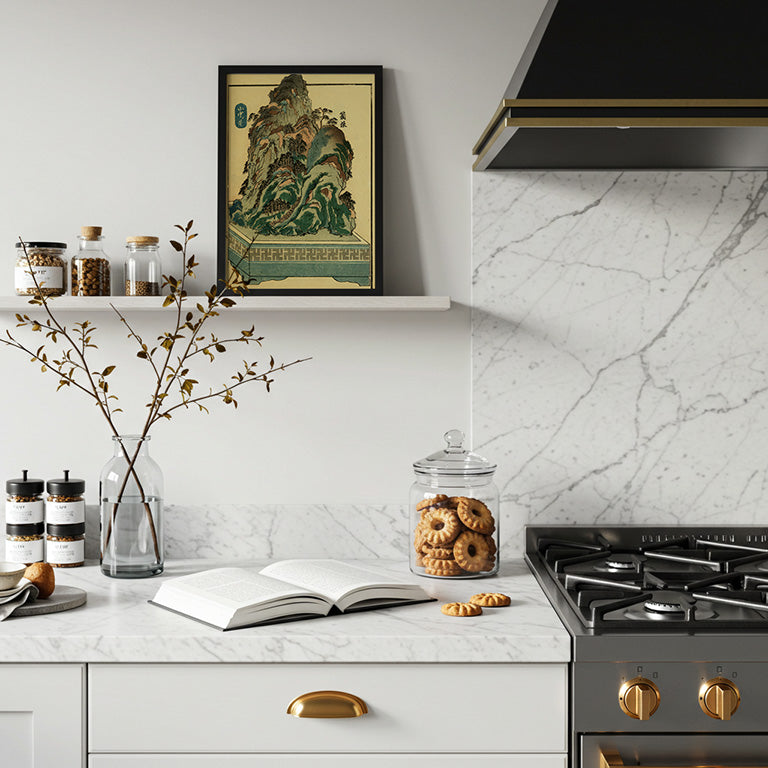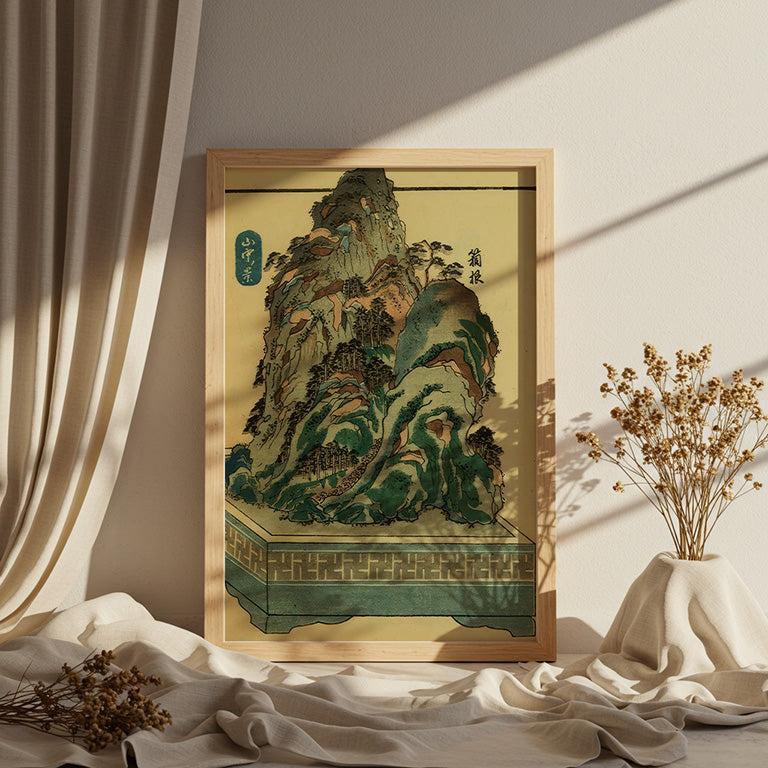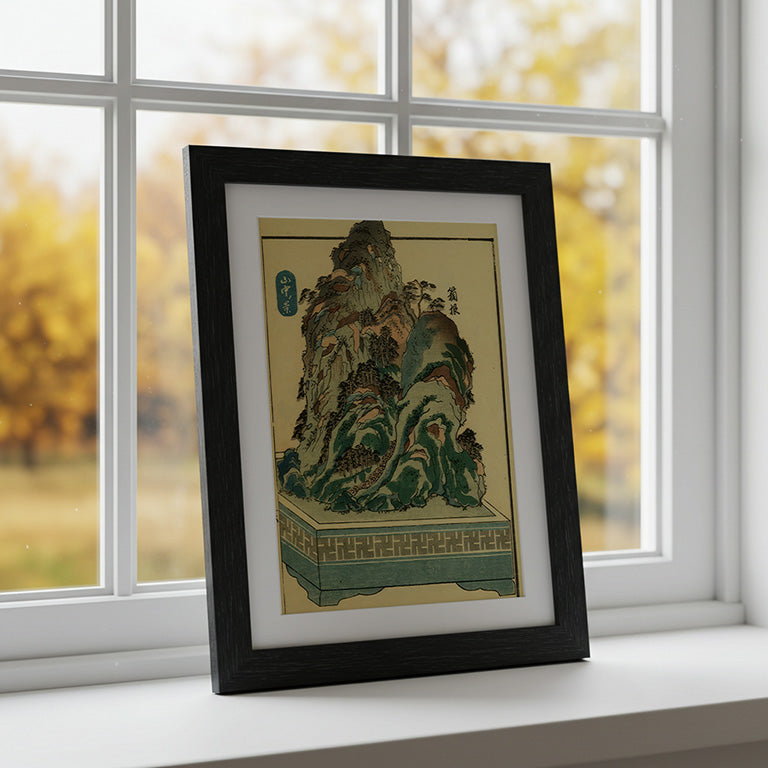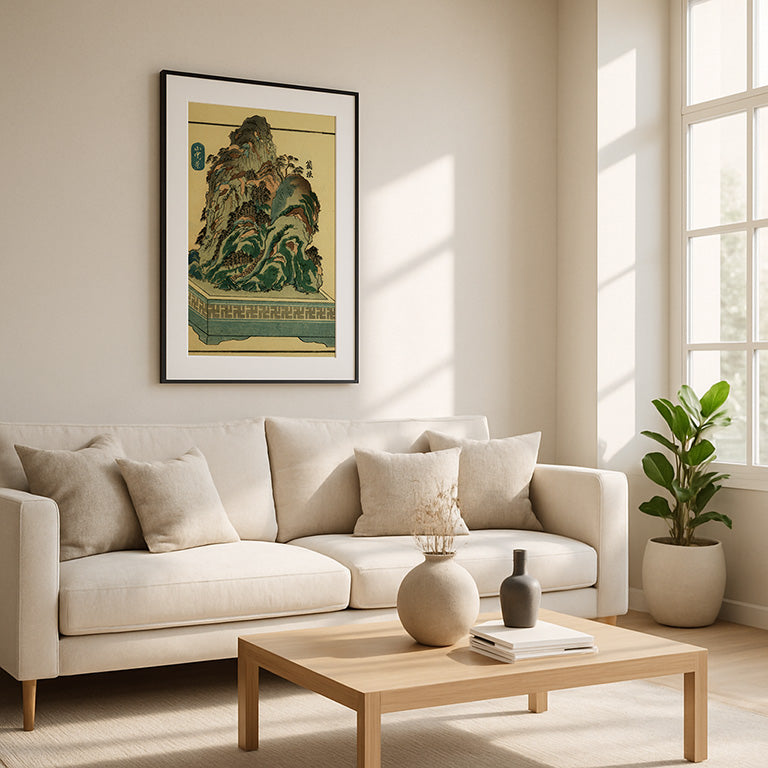"Hakone – Sacred Peak" | Japanese Mountain Landscape
"Hakone – Sacred Peak" | Japanese Mountain Landscape
No se pudo cargar la disponibilidad de retiro
"Sacred Peak – Hakone" – Japanese Mountain Landscape Print | Digital Download (Tōkaidō Series, 1848)
Bring timeless elegance to your space with Sacred Peak – Hakone, a majestic digital art print from the celebrated 53 Stations of the Tōkaidō as Potted Landscapes (1848). This traditional Japanese woodblock print features a towering, stylized mountain teeming with pine trees, symbolizing strength and serenity. Presented within a decorative container, it reflects the Edo-period fascination with nature miniaturized into poetic form.
Perfect for fans of Japanese mountain art, vintage landscape prints, and zen-inspired interiors.
➤ High-resolution printable file
➤ Instant download – ideal for framing
➤ Great for Japan lovers, meditation spaces, or wabi-sabi decor

Pixartiko Collective – Usage License
Prints allowed for personal use and resale only as physical products in local shops. Use in other physical goods permitted if pixartiko.com is credited when possible.
Digital resale, sharing, or publishing is strictly forbidden.
Designs are not public domain and cannot be distributed online.
© pixartiko.com – All rights reserved.
Print Sizes
🖼 Included Print Sizes (No Cropping Needed)
This high resolution digital file is optimized for printing at the following standard sizes, no cropping or borders required. Just download, print, and frame:
| Inches | Centimeters | Suggested Use |
|---|---|---|
| 20 x 30 | 50.8 x 76.2 | Gallery posters, premium wall art |
| 16 x 24 | 40.6 x 61.0 | Exhibition prints, home decoration |
| 12 x 18 | 30.5 x 45.7 | Standard posters, frame-ready prints |
| 10 x 15 | 25.4 x 38.1 | Photo enlargements, studio portraits |
| 8 x 12 | 20.3 x 30.5 | Portfolio prints, photo books |
| 6 x 9 | 15.2 x 22.9 | Small art prints, promotional material |
🖨️ All sizes are print-ready at 300 DPI, maintaining the original image ratio. No cropping or borders required.
📂 Your download includes:
- 1 high resolution JPEG file (Aspect Ratio: 2:3 - Portrait).
- Artistic Declaration Certificate in PDF.
- Free gift: The Ages of Painting guide — a visual journey through the history of painting.
🎨 Need a different size or format?
No problem! Just send me a message and I’ll be happy to adapt it for you.
🎧 Art Review
“Hakone”, from the series 53 Stations of the Tōkaidō as Potted Landscapes.
Utagawa Yoshishige, ca. 1848
Among the most visually arresting works in Utagawa Yoshishige’s exquisite series 53 Stations of the Tōkaidō as Potted Landscapes, Hakone towers—quite literally—as a sculptural marvel compressed into two dimensions. More than a mere depiction of one of Japan’s most rugged mountain passes, this piece is a testament to Yoshishige’s visionary blending of natural monumentality with the intimacy of the bonkei form.
What makes Hakone extraordinary is its ambitious verticality. Rising almost beyond the limits of the composition, the rocky outcrop is alive with movement and intricacy. Layers of stone strata, pine groves, and winding paths spiral up its steep incline, conjuring the sensation of climbing both a mountain and a memory. The landscape is presented as a miniature world, yet it evokes the vastness and danger that travelers once associated with the Hakone Pass—a place both feared and revered on the Tōkaidō road.
Yoshishige’s linework is confident and sharp, yet never rigid. His color palette—muted greens, soft ochres, and deep ultramarines—echoes the palette of traditional Japanese ceramics and mountain ink scrolls, while the base of the pot is decorated with geometric motifs that anchor the scene in the world of crafted objects. This tension between natural chaos and artistic control lies at the heart of the work’s power.
By omitting human figures, Hakone becomes an ode to the sheer force of nature. The landscape seems self-aware, almost sentient, as though the mountain has grown restless within its ceramic boundary. It’s a powerful metaphor for the Edo period’s relationship with nature: to revere it, to model it, but never to tame it.
In Hakone, Yoshishige reaches beyond the picturesque and delivers a meditation on landscape as sublime entity. It is a rare moment in art when scale becomes irrelevant, and the viewer is left not simply looking at a mountain, but feeling its ancient breath.

Share









